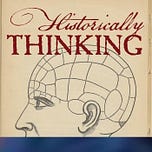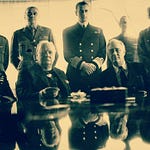Originally published on September 5, 2023 (Episode 332)
Introduction
From the Ionian revolt of the 490s, through the battles of Marathon, Thermopylae, Salamis, and Plataea, the vast Achaemenid Persian Empire was pitted against the pitifully small Greek states on its western periphery, until the astonishing successes of Alexander of Macedon decapitated it, placing him and his companions atop that imperial trunk. But Alexander’s death, and the wars of his successors, gave an opportunity for a new power to rise in the far west and march eastward. In time imperial Rome would face new Persian dynasties; and for centuries Rome and Persia warred in the Caucuses and across Mesopotamia, until at the beginning of the seventh century an apocalyptic struggle resulted in the downfall of Persia, and the crippling of Rome, just as a new world-changing force emerged from the Arabian peninsula.
That is a pretty good analogue to a ChatGPT description of a millennia’s worth of history, and while some of the facts are correct, nearly all of its interpretations are false. Such is Adrian Goldsworthy’s argument in his new book Rome and Persia: The Seven Hundred Year Rivalry (Basic Books, 2023). While there were periods of warfare, they were given the length of the two empires’ coexistence very sporadic indeed. Moreover, both empires had a respect for each other that they offered no other polity, and the trade and commerce between them—not just in products, but also in cultural mores—was perhaps the most important feature of their relationship.
This is Adrian’s fourth appearance on the podcast. He was last here discussing Philip and Alexander: Kings and Conquerors; he has also explained how Hadrian’s Wall worked, and why Julius Caesar needs to be taken seriously as a historian.
About the Guest
Adrian Goldsworthy is a historian and author specializing in Roman history and military history. His many works include Caesar: Life of a Colossus and Augustus: First Emperor of Rome. Rome and Persia continues his interest in long-term imperial dynamics.
For Further Investigation
Adrian Goldsworthy, Rome and Persia: The Seven Hundred Year Rivalry (Basic Books, 2023)
Michael H. Dodgeon and Samuel N. C. Lieu, The Roman Eastern Frontier and the Persian Wars AD 226–363: A Documentary History
Geoffrey Greatrex and Samuel N. C. Lieu, The Roman Eastern Frontier and the Persian Wars AD 363–628
Ammianus Marcellinus, The Late Roman Empire (AD 354–378), translated by Walter Hamilton (Penguin, 1986)
The Perseus Digital Library for all your classical texts and resources needs
Related Episodes
Cathal Nolan on why battles aren’t as decisive as often believed — [Episode 79: The Allure of Battle]
The Persian Version, on the first great Persian dynasty
Herodotus, with Jennifer Roberts, historian of the first war between Greeks and Persians
Nicholas Overtoom on the Parthian Empire, Rome’s great antagonist
💬 Listen & Discuss
Were Rome and Persia more rivals or trading partners? How does Goldsworthy’s account challenge the usual narrative of endless war? What parallels can we draw to modern perceptions of “great power rivalry”? Forward to someone who’s interested in learning the lessons of the past, but doesn’t read much from before 1935.











